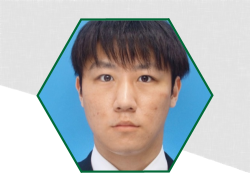Experiments were carried out to investigate the surface morphology and ablation threshold of titanium in air and in water irradiated with Nd:YAG laser. In the experiment, a Nd:YAG laser (wavelength of 532 nm, a pulse width of 10 ns, and a repetition rate of 10 Hz) was focused to a diameter of 33 ?m (FWe-1M) by a convex lens with a focal length of 200 mm, and was irradiated to titanium surface at a incident angle of 0 degree in the atmosphere or water. Titanium surface was mechanically polished and to be obtain an optical grade.Laser energy was controlled by a polarizing prism and a half wave plate in the range of 1?J to 40?J (corresponding laser fluence of 0.11J/cm2 to 4.61J/cm2). The melting threshold was estimated from the crater diameter depended on laser fluence.The melting threshold was 0.30 J/cm2 in air. On the other hand, the melting threshold was 0.43J/cm2 in water. The higher melting threshold in water might be suggested due to the cooling effect of water. The cooling effect in water was also confirmed in the melting threshold calculation using the one-dimensional thermal diffusion model. In addition, as comparing the surface morphology of the crater produced by laser in air and in water, it was confirmed by observation with FE-SEM that the formed shapes were different.
Keywords
- Ablation Threshold
- Melting Threshold
- Nd:yag Laser
- Surface Morphology
- Titanium

